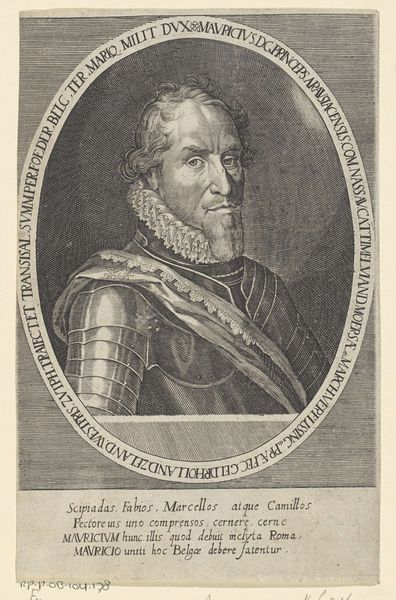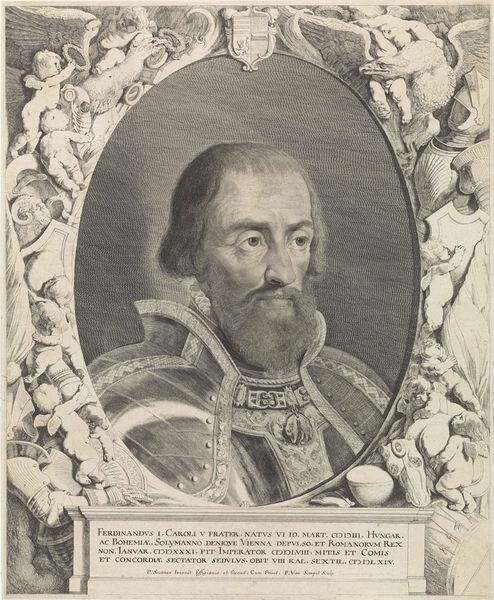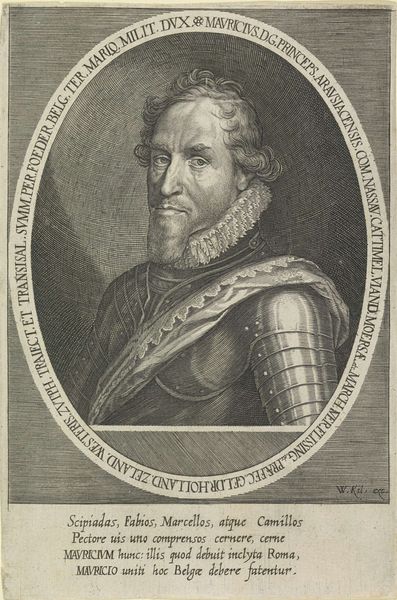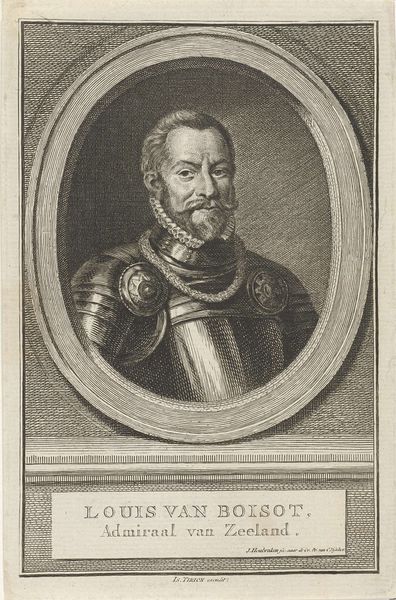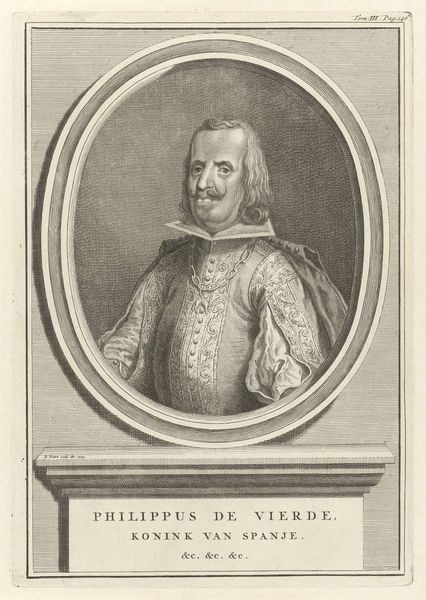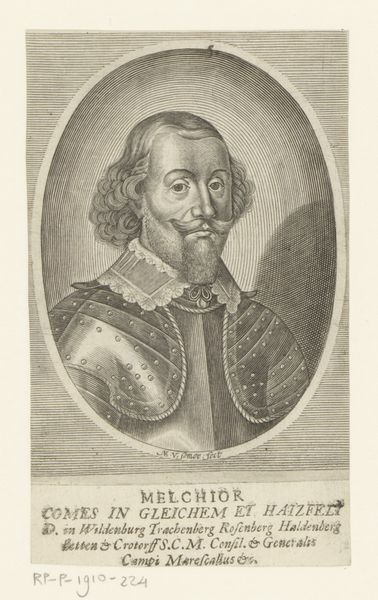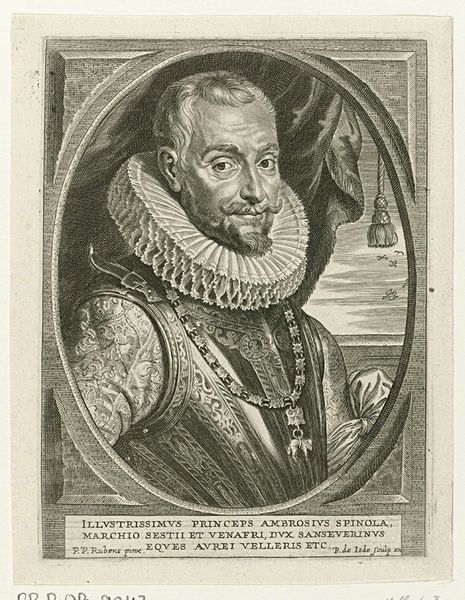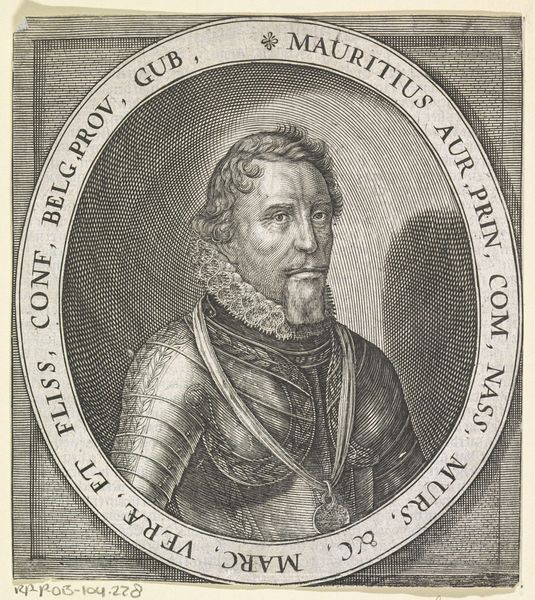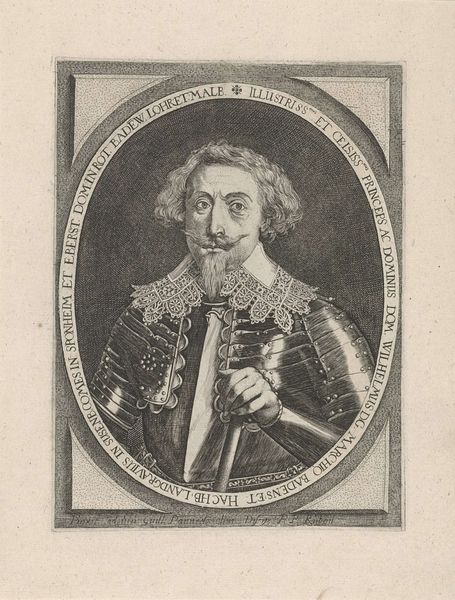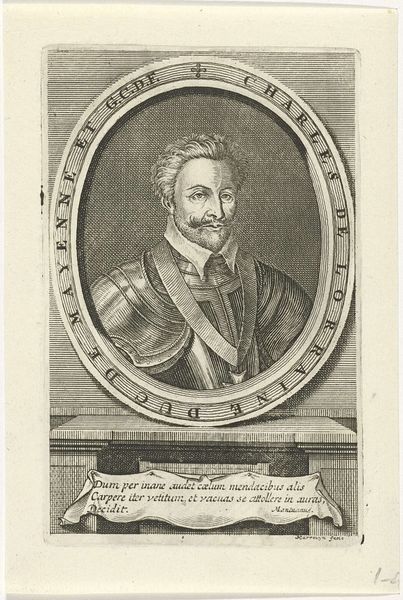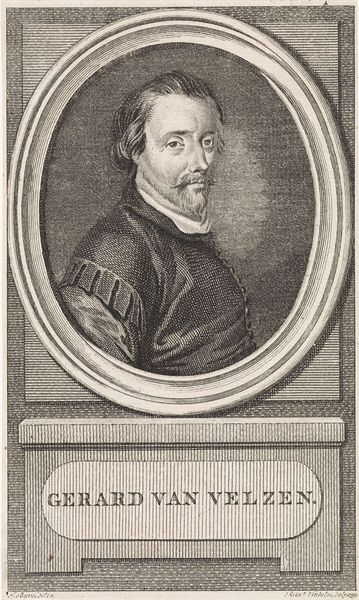
engraving
#
portrait
#
baroque
#
historical photography
#
history-painting
#
engraving
Dimensions: height 267 mm, width 185 mm
Copyright: Rijks Museum: Open Domain
Curator: What strikes me first about Wenceslaus Hollar's "Portrait of Thomas Howard, Earl of Arundel," created around 1639, is the intense detail rendered through engraving. Editor: My immediate impression is the sitter's embodiment of Baroque masculinity: power, wealth and status written all over his imposing presence. I see this portrait not just as an individual likeness, but as a carefully constructed representation of class and political authority at a pivotal moment in British history. Curator: Let's look at Hollar's technical mastery. The lines, forming shadow and light on Howard's face, achieve remarkable depth. And the text, forming a decorative element that grounds the whole composition and is very difficult to do so well in an engraving. What does that do for your intersectional view? Editor: It underscores the subject's importance! Howard wasn't just anyone; the text lists his titles: Earl of Arundel, Earl Marshal of England, and so on. It speaks to a very hierarchical society, reinforcing his position through visual representation at a time when the very concept of monarchy was increasingly embattled. He's presented, quite literally, as a pillar of the British establishment. Curator: The precision does elevate Howard, perhaps legitimizes him. The engraving style and circular framing evokes classical portraiture, another visual cue linking him to traditions of power and aristocracy. I suppose a modern viewer may well question that inherited authority? Editor: Exactly. And in thinking about visual construction, we need to address gender too. The armour and resolute gaze are intended to project strength. These choices resonate within larger patterns of gender and power representation prevalent in the Baroque era and even more so within contemporary issues. Curator: Well, looking beyond socio-political readings, Hollar’s work endures thanks to its virtuosic technique, don't you agree? He translated flesh and metal into pure line, something to admire beyond its cultural moment. Editor: But that technical virtuosity served a specific ideological function. Art isn’t made in a vacuum. By looking at technique through the lens of gender, race and class, we expose not only Howard's representation of power, but how such representation gets normalised in art, and more significantly, what the legacy of this entails. Curator: An insightful discussion. It seems we've shown that this piece is both a formal triumph and an echo of its historical moment. Editor: Precisely! Hopefully inviting modern viewers to examine both what's in the portrait and what created the conditions for it to exist.
Comments
No comments
Be the first to comment and join the conversation on the ultimate creative platform.
